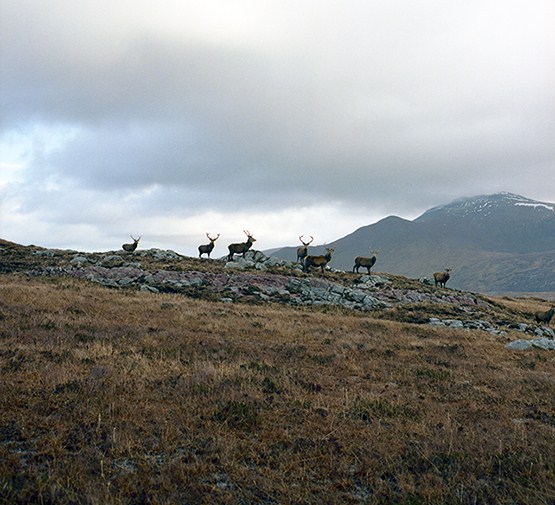What can you expect from your stalking during the month of March?

(Above: At this time of year our quarry is at its lowest ebb)
I have always had a fondness for March. Not only is it at last possible to start feeling a little warmth in the Sun, but it was also during this month that I first took on a sizeable plot of land as a professional stalker in the Hampshire countryside.
I vividly recall the elderly landowner giving me a personal guided tour of the farm on a bright clear March morning. As chance had it, during the excursion, we laid eyes on a large family of Roe deer lying up in the early spring sunshine near my hosts deer ravaged garden. Clearly well accustomed to getting away with their plundering of the adjacent flower beds untroubled, the Roe nonchalantly returned our gaze under lazy eyelids. Foolishly captivated by the sight of such an enchanting scene, and naively ignorant of my hosts reddening face, I uttered the word ‘beautiful’ and instantly regretted it, my ill considered comment drew an angry glance from my guide, who had clearly began to question his judgement at having employed the services of such a soft hearted deer manager!
Clearing my throat and attempting to recover some credibility, I quickly uttered further remark that; ‘beautiful or not, these deer would certainly require a firm hand’.
My aim here is to illustrate the dichotomy for many stalkers, who will often have a profound affection for the deer that they stalk, yet be required to kill them. How this sits in each of our minds is the result of a personal journey. Speaking for myself, I feel at ease in the knowledge that by selectively weeding out the less fit I am engaging in an age old process of encouraging the most fit to survive and the betterment of the species.
My reason for mentioning this recollection in relation to the month of March is in fact two fold, for it is at this time of year that it is also worth remembering our affections for our quarry, who by virtue of the lack of cover and scarcity of browse, are not only at their most visible but also at their most vulnerable. As the winter months draw to a close deer are, through months of hardship, malnourished and deficient of nutrition. Days and weeks of wet and cold, and a lack of food mean that at this time of year our quarry is at its lowest ebb. Add to this the fact that most females will also be heavily pregnant and you can understand why during March natural mortality reaches its peak.
March is therefore the time for deer managers to show a little mercy. Of course in Scotland the season for the vast majority of deer has already ended and some would argue rightly so. None the less, current legislation in England and Wales permits the taking of all females and males (save the Roe Buck) through this vulnerable stage in the deer’s annual cycle. As deer managers we should therefore remember our affection for what is undoubtedly one of the UK’s most treasured wild animals and exercise compassion and restraint from pressing our prey too hard during this challenging time.
 IN Season in England & Wales: Roe Does, Fallow Does & Fallow Buck, Sika Stags & Sika Hinds, Red Stags & Red Hinds, CWD Bucks & CWD Does, Muntjac Buck & Muntjac Does.
IN Season in England & Wales: Roe Does, Fallow Does & Fallow Buck, Sika Stags & Sika Hinds, Red Stags & Red Hinds, CWD Bucks & CWD Does, Muntjac Buck & Muntjac Does.
Off Season in England & Wales: Roe Buck.
In Season in Scotland: Roe Does, Fallow Buck
Off Season in Scotland: Red Stags & Red Hinds, Sika Stags & Sika Hinds, Roe Buck and Fallow Does.
(Editor - Peter Jones)



















